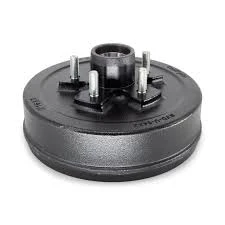
-
 Afrikaans
Afrikaans -
 Albanian
Albanian -
 Amharic
Amharic -
 Arabic
Arabic -
 Armenian
Armenian -
 Azerbaijani
Azerbaijani -
 Basque
Basque -
 Belarusian
Belarusian -
 Bengali
Bengali -
 Bosnian
Bosnian -
 Bulgarian
Bulgarian -
 Catalan
Catalan -
 Cebuano
Cebuano -
 Corsican
Corsican -
 Croatian
Croatian -
 Czech
Czech -
 Danish
Danish -
 Dutch
Dutch -
 English
English -
 Esperanto
Esperanto -
 Estonian
Estonian -
 Finnish
Finnish -
 French
French -
 Frisian
Frisian -
 Galician
Galician -
 Georgian
Georgian -
 German
German -
 Greek
Greek -
 Gujarati
Gujarati -
 Haitian Creole
Haitian Creole -
 hausa
hausa -
 hawaiian
hawaiian -
 Hebrew
Hebrew -
 Hindi
Hindi -
 Miao
Miao -
 Hungarian
Hungarian -
 Icelandic
Icelandic -
 igbo
igbo -
 Indonesian
Indonesian -
 irish
irish -
 Italian
Italian -
 Japanese
Japanese -
 Javanese
Javanese -
 Kannada
Kannada -
 kazakh
kazakh -
 Khmer
Khmer -
 Rwandese
Rwandese -
 Korean
Korean -
 Kurdish
Kurdish -
 Kyrgyz
Kyrgyz -
 Lao
Lao -
 Latin
Latin -
 Latvian
Latvian -
 Lithuanian
Lithuanian -
 Luxembourgish
Luxembourgish -
 Macedonian
Macedonian -
 Malgashi
Malgashi -
 Malay
Malay -
 Malayalam
Malayalam -
 Maltese
Maltese -
 Maori
Maori -
 Marathi
Marathi -
 Mongolian
Mongolian -
 Myanmar
Myanmar -
 Nepali
Nepali -
 Norwegian
Norwegian -
 Norwegian
Norwegian -
 Occitan
Occitan -
 Pashto
Pashto -
 Persian
Persian -
 Polish
Polish -
 Portuguese
Portuguese -
 Punjabi
Punjabi -
 Romanian
Romanian -
 Russian
Russian -
 Samoan
Samoan -
 Scottish Gaelic
Scottish Gaelic -
 Serbian
Serbian -
 Sesotho
Sesotho -
 Shona
Shona -
 Sindhi
Sindhi -
 Sinhala
Sinhala -
 Slovak
Slovak -
 Slovenian
Slovenian -
 Somali
Somali -
 Spanish
Spanish -
 Sundanese
Sundanese -
 Swahili
Swahili -
 Swedish
Swedish -
 Tagalog
Tagalog -
 Tajik
Tajik -
 Tamil
Tamil -
 Tatar
Tatar -
 Telugu
Telugu -
 Thai
Thai -
 Turkish
Turkish -
 Turkmen
Turkmen -
 Ukrainian
Ukrainian -
 Urdu
Urdu -
 Uighur
Uighur -
 Uzbek
Uzbek -
 Vietnamese
Vietnamese -
 Welsh
Welsh -
 Bantu
Bantu -
 Yiddish
Yiddish -
 Yoruba
Yoruba -
 Zulu
Zulu
two types of drum brakes
Two Types of Drum Brakes A Comprehensive Overview
Drum brakes are a critical component of many vehicles’ braking systems, providing reliable stopping power through a simple yet effective design. While they may not be as prevalent in modern vehicles, drum brakes still play an essential role in the functioning of numerous cars, trucks, and motorcycles. This article explores the two primary types of drum brakes—leading-trailing drum brakes and duo-servo drum brakes—highlighting their structures, functionalities, and applications.
Leading-Trailing Drum Brakes
Leading-trailing drum brakes are commonly used in lighter vehicles, including passenger cars and small trucks. This brake system consists of two brake shoes one leading and one trailing. The leading shoe is the one that moves in the direction of the wheel's rotation, while the trailing shoe moves in the opposite direction.
The operation of leading-trailing drum brakes is straightforward. When the brake pedal is pressed, hydraulic fluid or mechanical force pushes the brake shoes outward against the inside wall of the brake drum. The leading shoe, being pushed forward, tends to wedge itself against the drum, creating a more significant frictional force. In contrast, the trailing shoe experiences less wedging effect, which reduces the overall drag on the system. This braking design enhances stability and improves performance, particularly during light-to-moderate braking situations.
Leading-trailing drum brakes are praised for their simplicity and effectiveness. They are relatively easy to install and maintain, making them popular in cost-sensitive applications. However, they are not as efficient under heavy braking conditions compared to their counterpart, which may lead to brake fade—a temporary loss of braking effectiveness due to overheating.
Duo-Servo Drum Brakes
two types of drum brakes

Duo-servo drum brakes are often found on heavier vehicles, such as larger trucks and trailers. This type of drum brake utilizes a distinct design where both brake shoes work together to enhance braking performance. In this configuration, one shoe acts as a leading shoe while the other serves as a trailing shoe, depending on the brake application.
The crucial feature of duo-servo drum brakes is their self-servo action. When the brakes are applied, the leading shoe effectively forces the trailing shoe against the drum, amplifying the braking force. This self-energizing action means that less force is needed from the brake pedal to achieve significant stopping power. As a result, duo-servo drum brakes provide exceptional performance in heavy-duty applications where robust braking is necessary.
While duo-servo brakes are powerful and efficient, they can be slightly more complex to maintain than leading-trailing systems due to their additional components and design characteristics. Regular maintenance is vital to ensure optimal performance and longevity, as wear on the brake shoes and drum can significantly affect braking effectiveness.
Conclusion
In summary, both leading-trailing and duo-servo drum brakes are integral to automotive safety, with each type offering unique benefits suited to various driving conditions and vehicle specifications. Leading-trailing drum brakes excel in lighter vehicles due to their simpler design and effective performance in everyday driving scenarios. In contrast, duo-servo drum brakes are ideal for heavier vehicles, providing enhanced stopping power through their self-energizing design.
Understanding these two types of drum brakes helps vehicle owners make informed decisions about maintenance and upgrades, ultimately ensuring better performance and safety on the road. Despite advancements in braking technology, drum brakes remain a reliable choice, showcasing the efficiency and effectiveness of their classic design.
-
What Are Drum BrakesNewsJul.07,2025
-
Understanding Brake Drum MaterialNewsJul.07,2025
-
Semi-Trailer Brake Drum: A Key Component for Extreme Loads and Long-Distance TransportNewsJul.07,2025
-
Drum Brake Pads for SaleNewsJul.07,2025
-
Brake Drums for SaleNewsJul.07,2025
-
Brake Drum ManufacturerNewsJul.07,2025
-
Aluminum Brake Drums: The Future of High-Performance CarsNewsJul.07,2025
